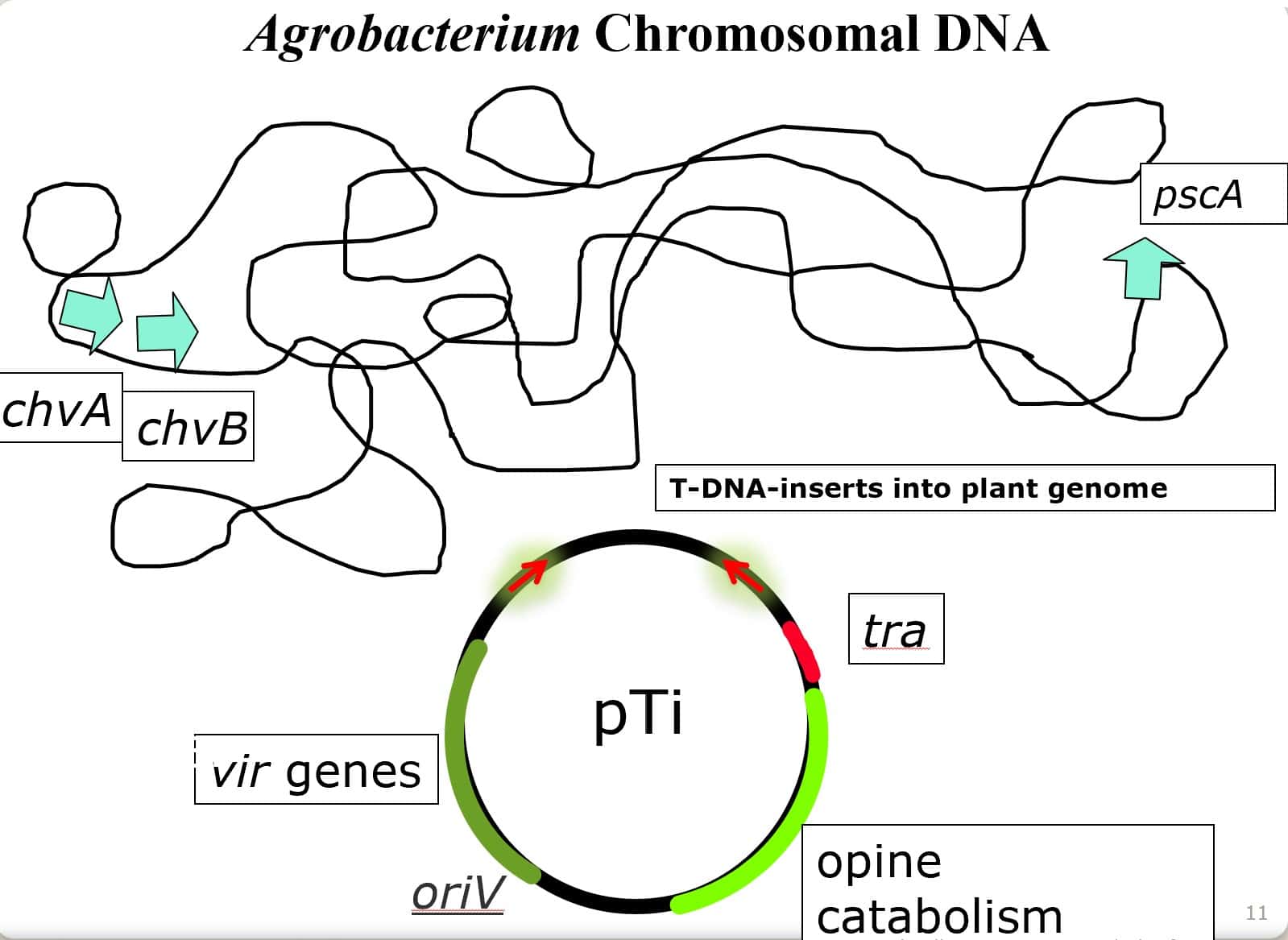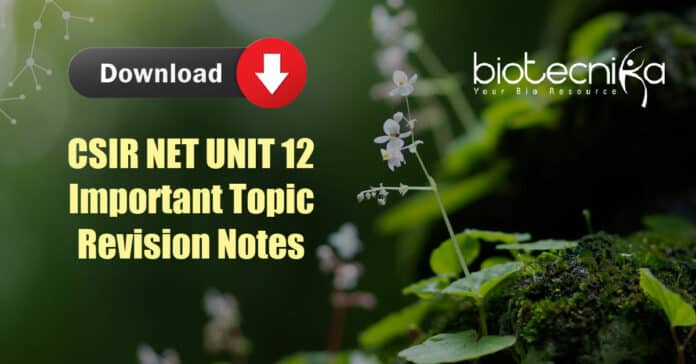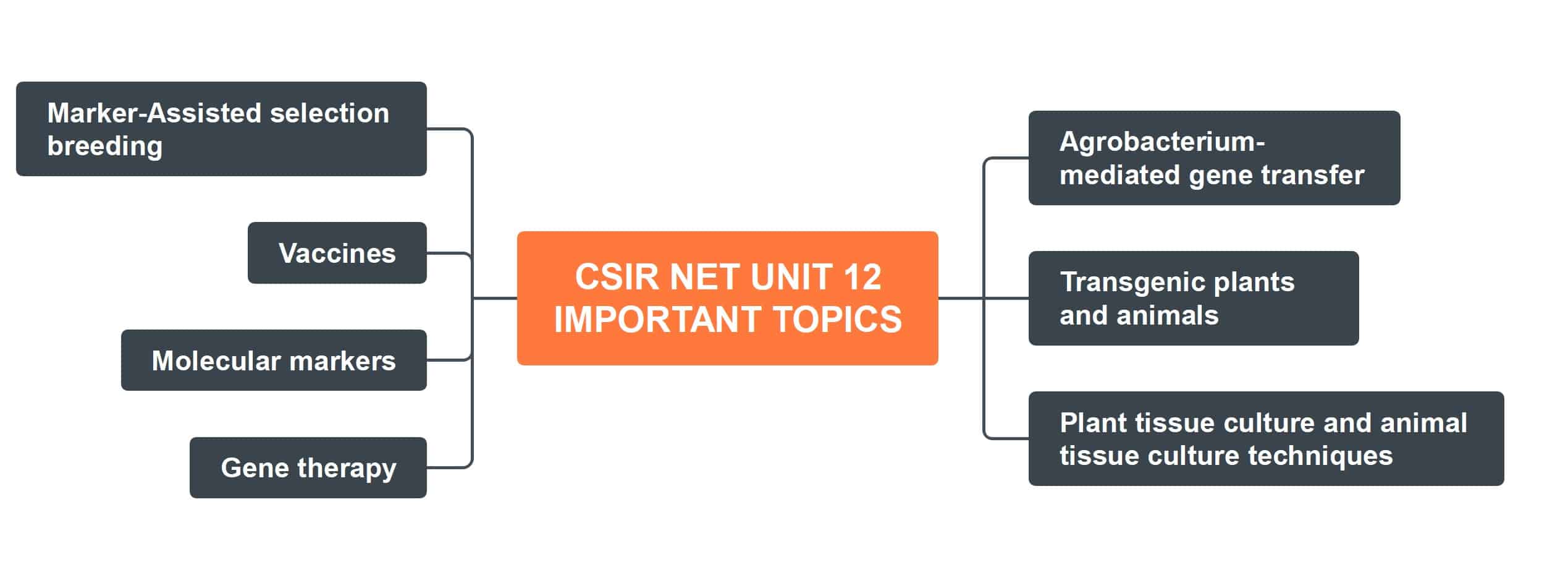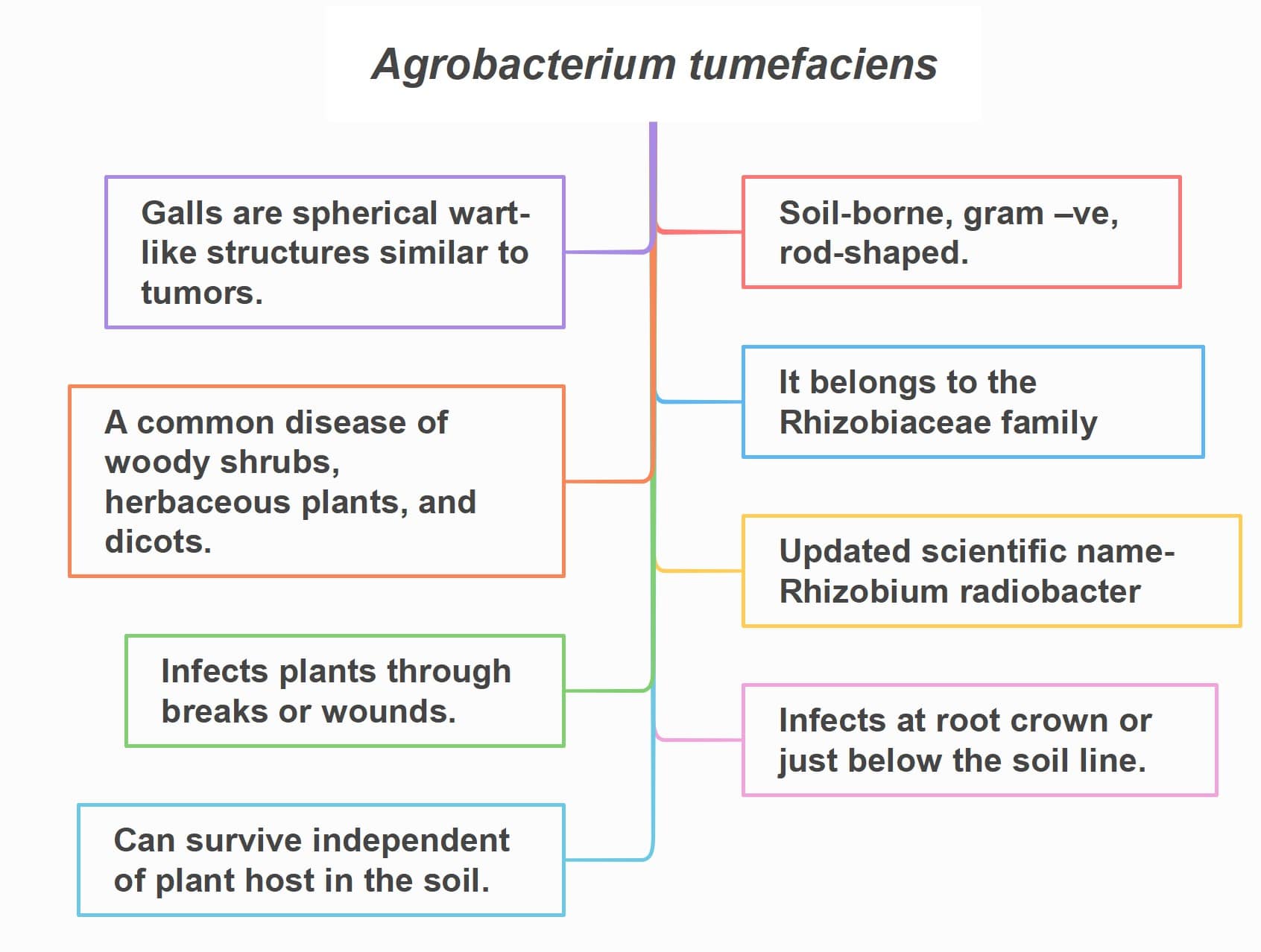CSIR NET UNIT 12 Notes Download on Agrobacterium-mediated gene transfer process
Unit 12 is Applied Biology which is a mixture of many topics. Biotecnika Experts are here to help you revise UNIT 12 Important topics. Thus presenting notes for the Agrobacterium-mediated gene transfer process. Before, let’s look at what kinds of questions are asked from UNIT 12 in the CSIR NET Exam, Important topics & Reference books.
- From This unit, one can expect one part B & one part C question in every exam.
- Questions are usually statement-based, match the following, or graph-based and require conceptual clarity.
- Direct questions are asked from Agrobacterium-mediated transformation, and technology concepts related to the development of transgene and its expression levels are often asked from this unit.
- Sometimes questions are asked by combining concepts from other units like Units 4 and 13.
- Preparation for this unit is easy as this unit is small and has topics common with other units, like Molecular markers and Plant vectors (Agrobacterium) in Unit 13, Vaccines in Unit 4, and Biodiversity in Unit 10.
- CSIR NET aspirants need not study all the topics from this unit but can selectively prepare this unit, emphasizing important topics asked in the exam. Important topics from this unit are mentioned below. As it is a small and easy unit, you can also prepare it parallelly with other units.
List of Important Topics you must study from CSIR NET UNIT 12:
REFERENCE BOOKS For CSIR NET UNIT 12
- Principles of Fermentation Technology by Stanbury
- Plant Breeding principles & Methods Paperback by BD Singh
- Plant Tissue Culture by Sathyanarayana B.N.
- Genome 3 by T.A.Brown
Download CSIR NET UNIT 12 Important Topic Notes On Agrobacterium-mediated gene transfer process
- (Virulent) strains of A. tumefaciens contain a 200-kb tumor-inducing (Ti) plasmid
- Bacteria transfer a portion of the plasmid DNA into the plant host (T-DNA).
The T-DNA is transferred from the Bacteria into the Nucleus of the Plant
- Stably integrates (randomly) into the plant genome.
- Expression of genes in wild-type T-DNA results in dramatic physiological changes in the plant cell.
- Synthesis of plant growth hormones (auxins and cytokinins) à neoplastic growth (tumor formation)
- vir genes are essential for the excision and transport of the T-DNA to the wounded plant cell.
MECHANISM OF DNA TRANSFER
- The transfer of the T-DNA between the A. tumefaciens cell and the plant cell is mediated by virulence gene products encoded on the bacterium’s chromosome and the Ti plasmid.
- Chromosomally encoded virulence genes (chv for chromosomal virulence) also

- The T-DNA of the Ti plasmid contains the DNA that will ultimately be transferred into the plant cell and is defined by left and right borders, which are 25-base pair imperfect direct repeats.
- There are no known limits as to the size of the piece of DNA that can be transferred. By reversing the right border’s orientation, investigators have demonstrated that the entire 200 kilobases of the Ti plasmid can be transferred into the plant cell.
Download CSIR NET UNIT 12 Important Topic Notes On Agrobacterium-mediated gene transfer process
In the above figure of a Ti Plasmid:
- LB and RB—demarcate the TDNA in the plasmid.
- Auxin and cytokinin biosynthesizing gene— Help in the establishment of tumor in the host plant.
- Opine synthesizing genes
- Octopine and nopaline
- Octopine – Arginine + Alanine
- Nopaline — Glutamine + Arginine
- Enzyme synthesizing octopine— Octopine synthase
- Enzyme synthesizing nopaline— Nopaline synthase
- Tra (transfer) gene—required for conjugal transfer of Ti plasmid
- Opine catabolism genes—provide nutrition to the bacterium
- T-DNA—insert of the Ti plasmid
- Ori— origin of replication
- Vir — transfer of TDNA into the host nucleus
- Induce vir gene transcription and allow for T-DNA transfer and integration into plant chromosomal DNA.
- Transcription and translation of the T-DNA in the plant cell to produce opines (food) and tumors (housing) for the bacteria.
T-DNA TRANSFORMATION
The T-DNA transformation process can be divided arbitrarily into six major steps;
CONTD…
Download CSIR NET UNIT 12 Important Topic Notes On Agrobacterium-mediated gene transfer process









































